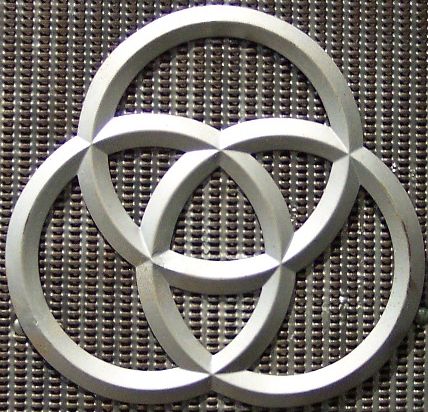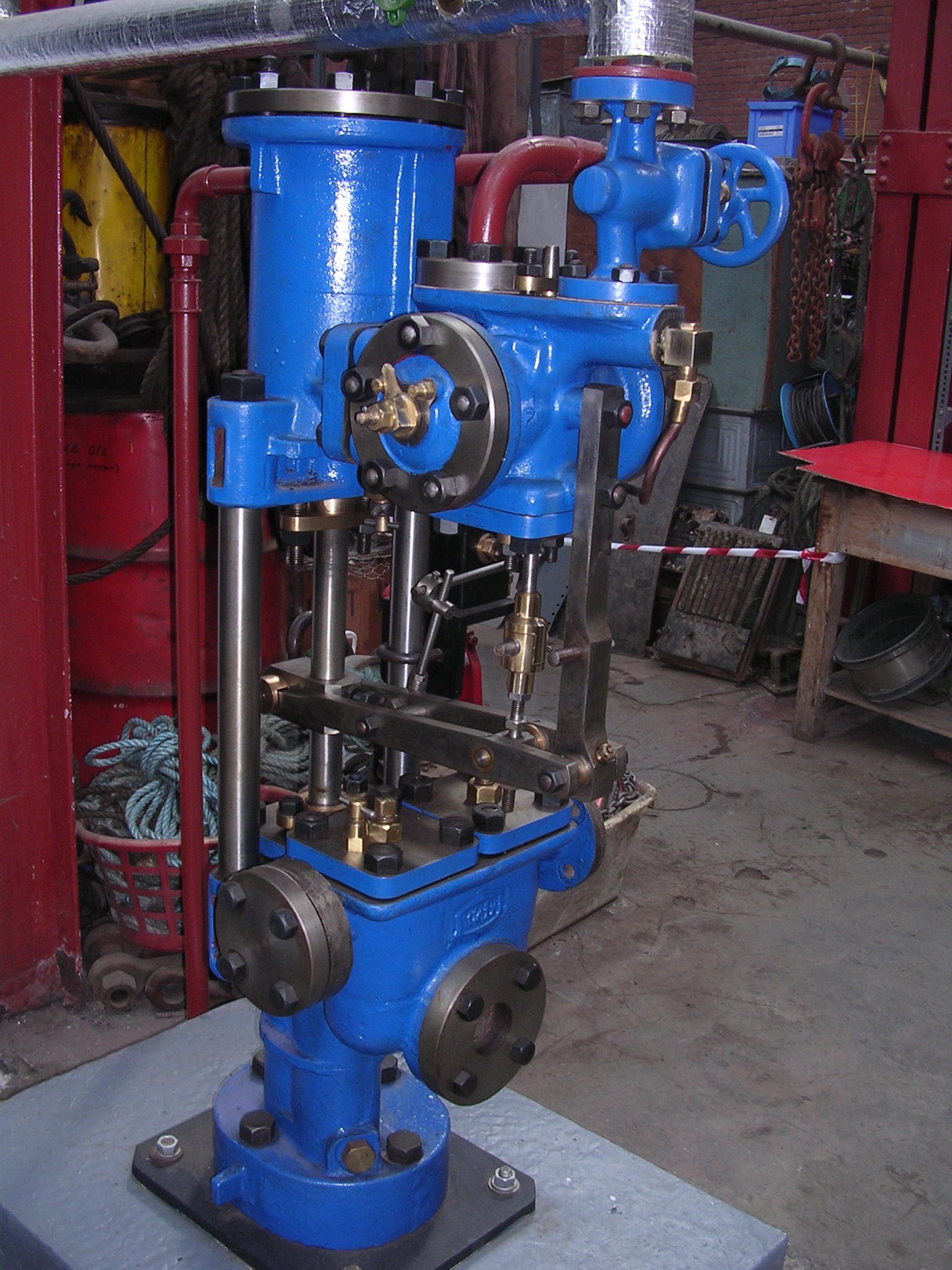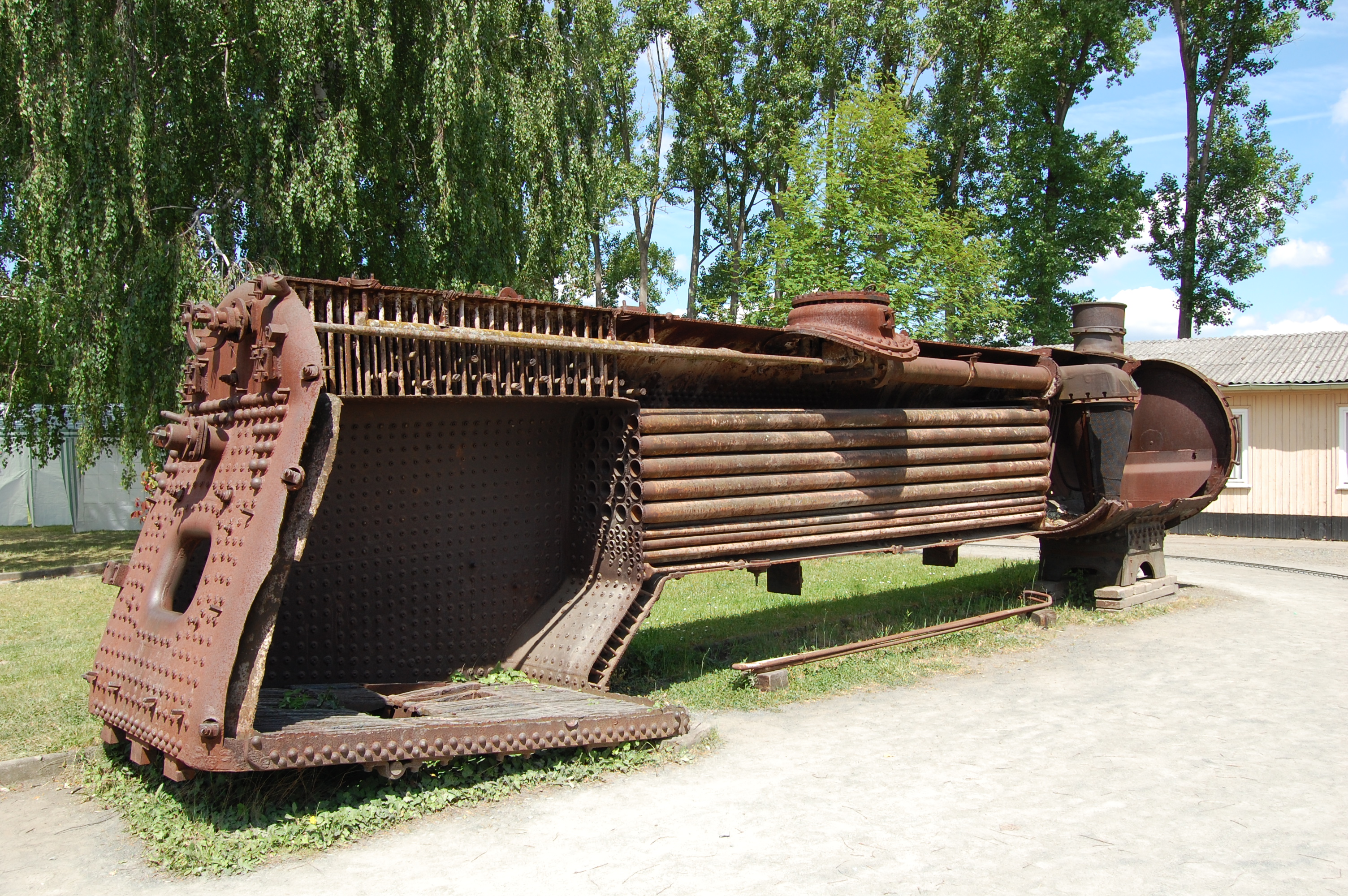|
NWE No. 21
The NWE No. 21II, later DR 99 6001 is a narrow gauge steam locomotive that was built in 1939 for a track gauge of one metre and is still on duty with the Harz Narrow Gauge Railways (HSB) today. History The locomotive was the only unit to be built of a planned series of standard superheated steam locomotives with the axle arrangements 1'C1', 1'D1' and 1'E1', that the Nordhausen-Wernigerode Railway Company (NWE), the Gernrode-Harzgerode Railway Company and the South Harz Railway Company had ordered from Friedrich Krupp AG for replacing their older, less economic saturated steam engines. In standardising their designs, it was envisaged that as many parts of the locomotives as possible would be used across the whole range in the interests of economic production, simplified spare part stock holdings and easier maintenance and servicing. But because the development order was not given by the Deutsche Reichsbahn and because different construction conventions were followed in so ... [...More Info...] [...Related Items...] OR: [Wikipedia] [Google] [Baidu] |
Friedrich Krupp AG
The Krupp family (see pronunciation), a prominent 400-year-old German dynasty from Essen, is notable for its production of steel, artillery, ammunition and other armaments. The family business, known as Friedrich Krupp AG (Friedrich Krupp AG Hoesch-Krupp after acquiring Hoesch AG in 1991 and lasting until 1999), was the largest company in Europe at the beginning of the 20th century, and was the premier weapons manufacturer for Germany in both world wars. Starting from the Thirty Years' War until the end of the Second World War, it produced battleships, U-boats, tanks, howitzers, guns, utilities, and hundreds of other commodities. The dynasty began in 1587 when trader Arndt Krupp moved to Essen and joined the merchants' guild. He bought and sold real estate, and became one of the city's richest men. His descendants produced small guns during the Thirty Years' War and eventually acquired fulling mills, coal mines and an iron forge. During the Napoleonic Wars, Friedrich Kru ... [...More Info...] [...Related Items...] OR: [Wikipedia] [Google] [Baidu] |
Selke Valley Railway
The Selke Valley Railway (''Selketalbahn''), ''Gernrode-Harzgerode Railway'' (''Gernroder-Harzgeroder Eisenbahn'') and the ''Anhalt Harz Railway'' (''Anhaltische Harzbahn'') were different names for the metre gauge railway in the Lower Harz, Germany, originally owned by the Gernrode-Harzgerode Railway Company (''Gernrode-Harzgeroder Eisenbahn-Gesellschaft'', GHE). It is now only known as the ''Selke Valley Railway''. This has included the Quedlinburg– Gernrode line since 2006. It continues through Alexisbad to Hasselfelde and includes the Alexisbad– Harzgerode branch and the Stiege–Eisfelder Talmühle connecting line. All of them are now owned by the Harz Narrow Gauge Railways ''(Harzer Schmalspurbahnen''). The line follows the Selke river between Mägdesprung and Albrechtshaus. History Opening and early years The Gernrode–Mägdesprung railway was opened by the Gernrode-Harzgerode Railway Company (''Gernrode-Harzgeroder Eisenbahn-Gesellschaft'', GHE) after a constru ... [...More Info...] [...Related Items...] OR: [Wikipedia] [Google] [Baidu] |
Trofimoff Piston Valve
The Trofimoff valve (german: Trofimoff-Schieber) (also ''Trofimov'', ''Troffimoff'' or ''Trofimof'') is a springless pressure-compensation piston valve for steam locomotives. Overview The function of the valve is to improve efficiency when running light, with the regulator closed, such as when descending hills. The valve consists of the usual parts of a piston valve: two valve pistons with sealing rings, carried on a valve spindle driven by the valve gear The valve gear of a steam engine is the mechanism that operates the inlet and exhaust valves to admit steam into the cylinder and allow exhaust steam to escape, respectively, at the correct points in the cycle. It can also serve as a reversing .... The difference with a Trofimoff valve is that the piston heads are free to slide on the spindle. When steam pressure is applied, under normal operating conditions, steam is admitted to the centre of the valve chest. This forces the valve heads apart against end stops on the spind ... [...More Info...] [...Related Items...] OR: [Wikipedia] [Google] [Baidu] |
Schulz Piston Valve
Schulz is a common German and Jewish-Ashkenazi family name from Germany, particularly Northern Germany. The word ''Schulz'' originates from the local official title of Schultheiß or ''(Dorf-)Schulz(e)'', meaning village headman or constable / sheriff in the medieval sense (akin to today's office of mayor). In East Central Germany and Silesia, the "u" was often replaced by "o"; see also Scholz and Scholtz. People named Schulz * Andrew Schulz (born 1983), comedian * Axel Schulz, (born 1968), German boxer * Bernd Schulz, footballer * Bruno Schulz, Polish Jewish writer * Charles M. Schulz (1922–2000), American cartoonist, author of ''Peanuts'' * Ervin Harold Schulz (1911-1978), American businessman, newspaper editor, and politician * Erwin Schulz (1900–1981), German Nazi SS general and Holocaust perpetrator * Emil Schulz (1938–2010), German boxer * Friedemann Schulz von Thun (born 1944), German psychologist * Friedrich Schulz (1897–1976), German general * Günter S ... [...More Info...] [...Related Items...] OR: [Wikipedia] [Google] [Baidu] |
Kuhn Slide
The Kuhn slide () is part of a modified Walschaerts (German: ''Heusinger'') valve gear on steam locomotives and is named after its inventor, Michael Kuhn (1851–1903). The term is also used to refer to this particular type of Walschaerts valve gear system as a whole. Overview Problems often arise in incorporating a Walschaerts valve gear into the design of tank and narrow gauge locomotives because of space limitations. The reversing rod (with its lifting arm), needed to change between forward and reverse running, is therefore mounted at the same level as the pivot of the expansion link. This enables the lifting link (') to be dispensed with, and the lifting arm to be connected directly to the radius rod. To ensure the required horizontal movement, the back end of the radius rod is designed as a slide (the 'Kuhn slide') which fits into a rotatable crosshead (''Gleitstein'') in the lifting arm. Advantages The Kuhn valve gear was not as widespread as the classic Walschaerts valv ... [...More Info...] [...Related Items...] OR: [Wikipedia] [Google] [Baidu] |
Egide Walschaerts
Egide Walschaerts (21 January 1820 – 18 February 1901) was a Belgium, Belgian mechanical engineer, best known as the inventor of the Walschaerts valve gear used in steam locomotives. He was born in Mechelen, Belgium. In 1838 he was recognised as an excellent modeller, presenting his work at a local exhibition in Mechelen. Minister Rogier, who opened the exhibition, was so impressed that he arranged a place for Walschaerts at Liège University. Career In 1842 he joined the Rail transport in Belgium, Belgian State Railways and two years later had reached the rank of foreman. He was made chief superintendent of the works shortly after but mysteriously, for such a meteoric early career, never rose any higher. He held this position for the rest of his life, first at Mechelen and then at Brussels-South railway station, Brussels South. Walschaerts valve gear Whilst at Mechelen in 1844 he developed a new type of valve gear (a mechanism that allows for adjustment of the travel of ... [...More Info...] [...Related Items...] OR: [Wikipedia] [Google] [Baidu] |
Rail Gauge
In rail transport, track gauge (in American English, alternatively track gage) is the distance between the two rails of a railway track. All vehicles on a rail network must have wheelsets that are compatible with the track gauge. Since many different track gauges exist worldwide, gauge differences often present a barrier to wider operation on railway networks. The term derives from the metal bar, or gauge, that is used to ensure the distance between the rails is correct. Railways also deploy two other gauges to ensure compliance with a required standard. A ''loading gauge'' is a two-dimensional profile that encompasses a cross-section of the track, a rail vehicle and a maximum-sized load: all rail vehicles and their loads must be contained in the corresponding envelope. A ''structure gauge'' specifies the outline into which structures (bridges, platforms, lineside equipment etc.) must not encroach. Uses of the term The most common use of the term "track gauge" refers to the ... [...More Info...] [...Related Items...] OR: [Wikipedia] [Google] [Baidu] |
Feedwater Pumps
A boiler feedwater pump is a specific type of pump used to pump feedwater into a steam boiler. The water may be freshly supplied or returning condensate produced as a result of the condensation of the steam produced by the boiler. These pumps are normally high pressure units that take suction from a condensate return system and can be of the centrifugal pump type or positive displacement type. Construction and operation Feedwater pumps range in size up to many kilowatts and the electric motor is usually separated from the pump body by some form of mechanical coupling. Large industrial condensate pumps may also serve as the feedwater pump. In either case, to force the water into the boiler, the pump must generate sufficient pressure to overcome the steam pressure developed by the boiler. This is usually accomplished through the use of a centrifugal pump. Another common form of feedwater pump runs constantly and is provided with a minimum flow device to stop overpressuring the ... [...More Info...] [...Related Items...] OR: [Wikipedia] [Google] [Baidu] |
Locomotive Boiler
A fire-tube boiler is a type of boiler in which hot gases pass from a fire through one or more tubes running through a sealed container of water. The heat of the gases is transferred through the walls of the tubes by thermal conduction, heating the water and ultimately creating steam. The fire-tube boiler developed as the third of the four major historical types of boilers: low-pressure tank or " haystack" boilers, flued boilers with one or two large flues, fire-tube boilers with many small tubes, and high-pressure water-tube boilers. Their advantage over flued boilers with a single large flue is that the many small tubes offer far greater heating surface area for the same overall boiler volume. The general construction is as a tank of water penetrated by tubes that carry the hot flue gases from the fire. The tank is usually cylindrical for the most part—being the strongest practical shape for a pressurized container—and this cylindrical tank may be either horizontal or ve ... [...More Info...] [...Related Items...] OR: [Wikipedia] [Google] [Baidu] |
Bissell Truck
A Bissell or Bissel truck (also Bissel bogie or Pony truck) is a single-axle bogie which pivots towards the centre of a steam locomotive to enable it to negotiate curves more easily. Invented in 1857 by and usually then known as a ''pony truck'', it is a very simple and common means of designing a carrying wheel. Name variants A pony truck in railway terminology, is a leading truck with only two wheels. Its invention is generally credited to Bissell, who devised one in 1857 and patented it the following year. Hence the term ''Bissel bogie'', ''Bissel truck'', or ''Bissel axle'' is used in continental Europe. In the UK, the term is Bissell truck.''Spellings" Conservative locomotive builders in Bissell's native United States did not tak ... [...More Info...] [...Related Items...] OR: [Wikipedia] [Google] [Baidu] |
Carrying Axle
A carrying wheel on a steam locomotive is a wheel that is not driven; i.e., it is uncoupled and can run freely, unlike a coupled or driving wheel On a steam locomotive, a driving wheel is a powered wheel which is driven by the locomotive's pistons (or turbine, in the case of a steam turbine locomotive). On a conventional, non-articulated locomotive, the driving wheels are all coupled .... It is also described as a running wheelWörterbuch der Industriellen Technik, Dr.-Ing. Richard Ernst, Oscar Brandstetter Verlag, Wiesbaden, 5. Auflage, 1989, . and their axle may be called a carrying axle. A carrying wheel is referred to as leading wheel if it is at the front, or a trailing wheel if it is at the rear of the locomotive. Weight distribution In particular reference to steam engines, the carrying wheels have a very important purpose of allowing the engine's weight distribution to be altered. For example in the use of leading wheels it would allow the boiler to be located f ... [...More Info...] [...Related Items...] OR: [Wikipedia] [Google] [Baidu] |
Bar Frame
A locomotive frame is the structure that forms the backbone of the railway locomotive, giving it strength and supporting the superstructure elements such as a cab, boiler or bodywork. The vast majority of locomotives have had a frame structure of some kind. The frame may in turn be supported by axles directly attached to it, or it may be mounted on bogies ( UK) / trucks ( US), or a combination of the two. The bogies in turn will have frames of their own. Types of frame 250px, Preserved GWR 9017 showing outside frames Three main types of frame on steam locomotives may be distinguished:, p 255. Plate frames These used steel plates about thick. They were mainly used in Britain and continental Europe. On most locomotives, the frames would be situated within the driving wheels ("inside frames"), but some classes of an early steam locomotive and diesel shunters were constructed with "outside frames". Some early designs were double framed where the frame consisted of plates both i ... [...More Info...] [...Related Items...] OR: [Wikipedia] [Google] [Baidu] |







.jpg)